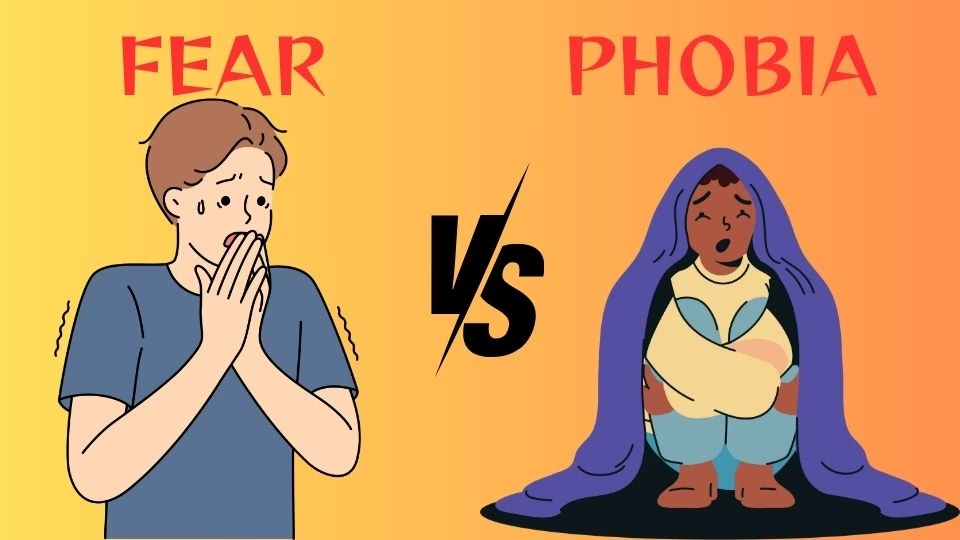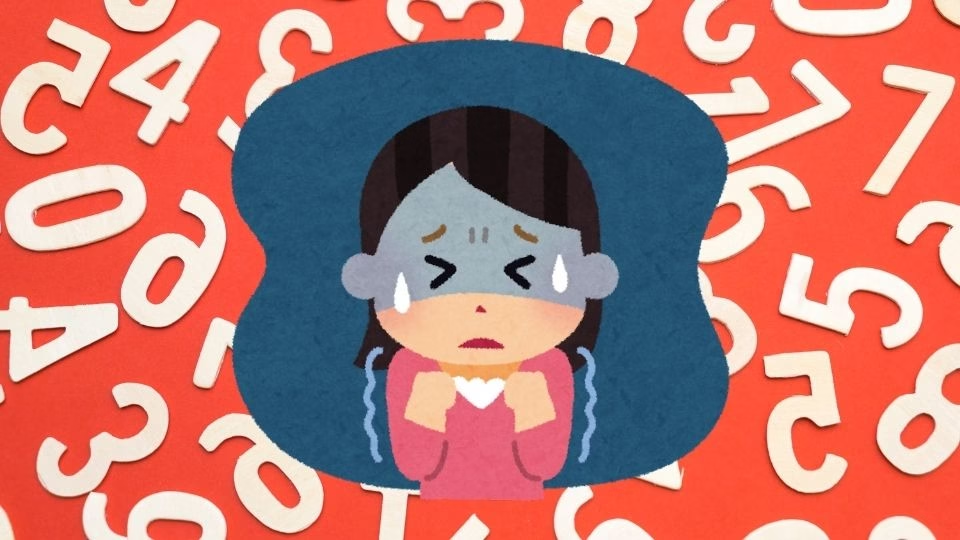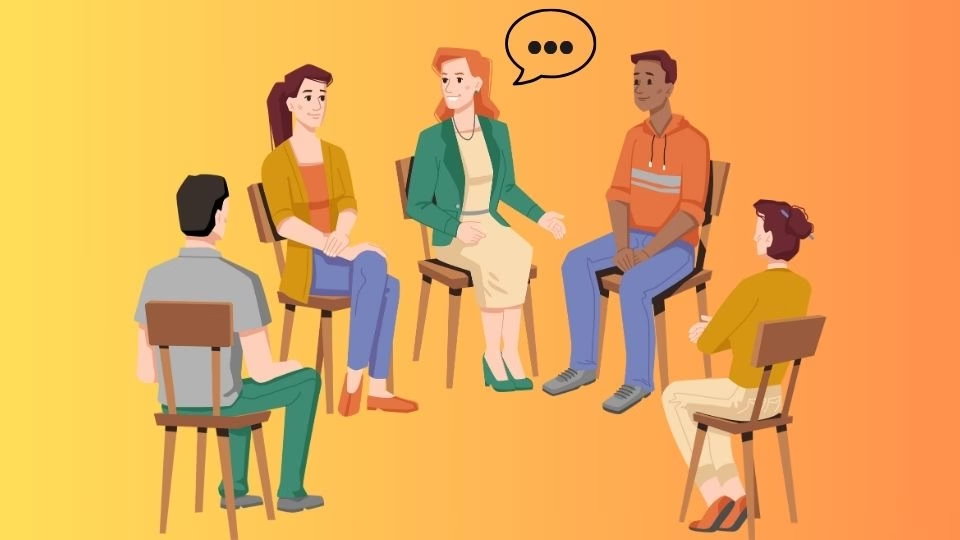What is Phobia?
A phobia is a type of anxiety disorder characterised by an excessive, persistent, and irrational fear of a specific object, situation, or activity.
People with phobias often understand that their fears are irrational, but they are unable to control their anxiety.
Phobias can significantly disrupt a person’s life, leading them to avoid triggers and experience distress.
Difference between Fear and Phobia.

Fear is a natural and adaptive response to a perceived threat or danger, while a phobia is an excessive, persistent, and irrational fear that significantly impairs daily life.
Fear is a normal emotion that helps individuals stay safe by triggering a “fight or flight” response in dangerous situations.
Phobias, on the other hand, are anxiety disorders where the fear is out of proportion to the actual threat and leads to avoidance behaviors and distress.
Here’s a breakdown of the key differences:
Fear
Fear is a proportionate and logical response to a genuine threat.
For instance, it’s normal to feel afraid if confronted by an aggressive dog.
Fear typically subsides once the threat has passed.
Fear serves a protective purpose, prompting individuals to take necessary actions to avoid danger.
Phobia
The fear experienced in a phobia is out of proportion to the actual threat posed by the object or situation.
For example, someone with a spider phobia might experience intense fear even when encountering a harmless, tiny spider.
Phobias persist over time, typically lasting for six months or more.
Phobias cause significant distress and impairment in daily life, leading individuals to avoid triggers and experience anxiety even when anticipating them.
What are different types of Phobia?
There are three types of phobia :-
Specific Phobia
Specific phobia is an extreme fear of an object or situation that is typically not harmful.
Examples include fear of flying, dogs, enclosed spaces, tunnels, and heights.
Individuals with specific phobias recognize that their fear is extreme but are unable to overcome it.
The problem is only diagnosed when the fear interferes with daily life.
While there is no known cause, specific phobias seem to run in families and are slightly more common in women.
Social Phobia
Social phobia is characterized by significant anxiety and discomfort related to the fear of embarrassment, humiliation, or scorn in social or performance situations.
Individuals with social phobia often feel very anxious before, during, and after social events.
They may experience physical symptoms such as blushing, sweating, trembling, or nausea.
It is important to note that social phobia is not the same as shyness.
While shy people may feel uneasy around others, they do not experience the same level of anxiety or avoidance behaviors as those with social phobia.
Agoraphobia
Agoraphobia often develops after a series of panic attacks.
The unpredictable nature of panic attacks can lead to a fear of future attacks, causing the individual to avoid any situation where an attack might occur.
What are the Triggers, Causes and Symptoms?
Triggers: Phobias can be triggered by various things, such as animals (e.g., spiders, snakes), natural environments (e.g., heights, storms), situations (e.g., flying, enclosed spaces), blood or injury, or social situations.
Causes: Phobias can develop due to a combination of genetic and environmental factors, including negative experiences, learned behaviours, and family history.
Symptoms: Phobias lead to physical, emotional, and behavioural symptoms. Common symptoms include:
• Chest tightness or pain
• Chills or hot flashes
• Choking sensations
• Confusion
• Difficulty breathing
• Dizziness
• Dry mouth
• Increased blood pressure
• Nausea
• Racing heartbeat
• Shaking or trembling
• Sweating
Interesting Facts about Phobia

Below is the list of different phobias which are regularly searched online.
| Sr No | Type of fear | Fear | Conditions |
|---|---|---|---|
| 1 | Biggest | Trypophobia | fear of clustered patterns of holes |
| 2 | Biggest | Agoraphobia | fear of public spaces or crowds |
| 3 | Biggest | Thalassophobia | fear of deep water |
| 4 | Common | Arachnophobia | Fear of spiders |
| 5 | Common | Acrophobia | Fear of heights |
| 6 | Common | Trypanophobia | Fear of injections |
| 7 | Rare | Arithmophobia | Fear of numbers |
| 8 | Rare | Globophobia | Fear of balloons |
| 9 | Rare | Omphalophobia | Fear of belly buttons |
| 10 | Raising | Cacophobia | Fear of ugliness |
| 11 | Raising | Atychiphobia | Fear of failure |
| 12 | Raising | Scolionophobia | Fear of school |
Practical Tips to Manage Phobia in Daily Life.

Managing a phobia in daily life can be challenging, but there are practical strategies that can help. The sources and our previous conversation provide helpful tips for coping with phobias.
Here are some practical tips for managing phobia in daily life, incorporating those insights:
1. Understand Your Phobia: Identify the specific objects, situations, or activities that provoke your fear. Common phobias include fear of spiders, heights, flying, open spaces, and social interactions.
2. Implement Relaxation Techniques: When you start to feel anxious, try to take slow, deep breaths.
3. Challenge Negative Thoughts: Be mindful of the thoughts that arise when you encounter or expect your trigger.
4. Gradual Exposure: Don’t tackle your phobia all at once. Instead, start by slowly introducing yourself to your trigger in manageable amounts.
5. Seek Support: Sharing your experiences with someone from your family or close friends whom you trust and who can provide emotional support and understanding.
Which Phobia do I have?
To know which phobia you have, you can check out Ananda.ai tool. If you liked it the tool do leave a comment mentioning this articles link.
My Take
If your phobia is significantly impacting your life, don’t hesitate to reach out to a mental health professional. Be patient with yourself and celebrate small victories. Phobias are common, and there are effective treatments available. By understanding your phobia, learning coping strategies, and seeking support, you can gain control over your fear and live a fulfilling life.
Disclaimer:- This post is not medical advice of any kind. It is an informational post about phobias.
Sources for this article
https://www.hopkinsmedicine.org/health/conditions-and-diseases/phobias
https://www.medicalnewstoday.com/articles/249347
https://www.health.harvard.edu/a_to_z/phobia-a-to-z
https://en.wikipedia.org/wiki/Phobia
https://www.verywellmind.com/list-of-phobias-2795453
https://www.health.com/athazagoraphobia-8675268

0 Comments